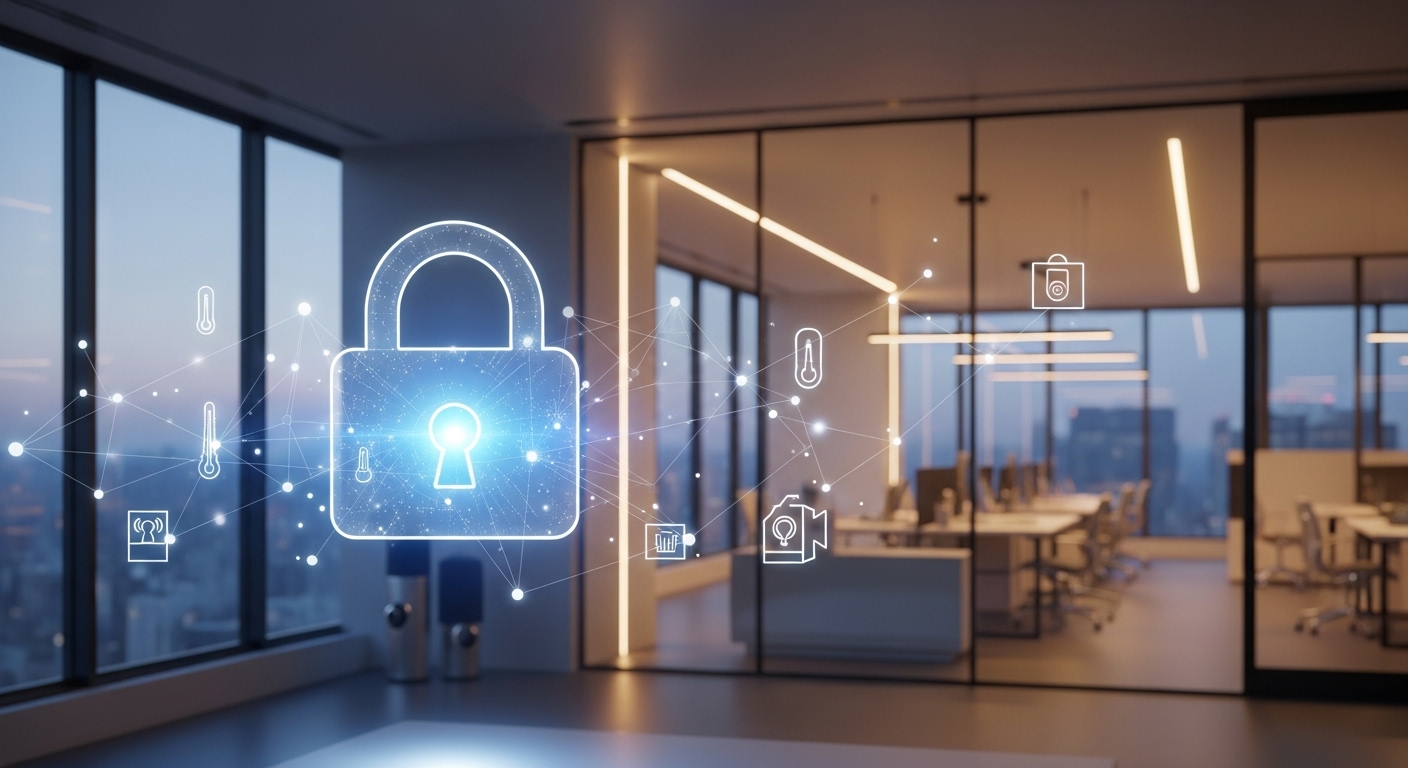The modern workplace is undergoing a radical transformation, powered by an ever-expanding array of smart technologies. From intelligent lighting that adjusts to natural daylight to sensors that optimize space utilization and climate control, the promise of the smart office is a hyper-efficient, productive, and personalized environment. However, this technological leap forward introduces a critical, often-underestimated vulnerability. Every connected device, from the smart coffee machine to the sophisticated access control system, represents a potential entry point for malicious actors. As businesses eagerly adopt these innovations to enhance the future of work, they are simultaneously creating a vast and complex digital attack surface. This article shifts the focus from the conveniences of smart office tech to the critical necessity of securing it. We will explore the new landscape of cyber threats, dissect the vulnerabilities inherent in IoT ecosystems, and provide a strategic framework for building a digital fortress that protects your assets, data, and people from emerging threats.
The New Attack Surface: Understanding Smart Office Vulnerabilities
The core vulnerability of any smart office lies in its interconnectedness. While traditional IT security focused on protecting servers, computers, and a defined network perimeter, the smart office dissolves this perimeter into hundreds, or even thousands, of micro-endpoints. Each IoT sensor, smart speaker, digital whiteboard, and automated HVAC unit is essentially a small computer, often running on minimal firmware with limited built-in security. Hackers are acutely aware of this. They don’t need to breach a central server if they can gain access through an insecure smart lightbulb. Common vulnerabilities include devices shipping with default, easily guessable passwords (like ‘admin’/’password’), a lack of timely firmware updates from manufacturers, leaving known exploits unpatched, and the use of unencrypted communication protocols that allow data to be intercepted in transit. For instance, a compromised HVAC system could not only disrupt the office environment but could also be used as a pivot point to launch attacks against more critical systems on the same network, such as financial databases or employee records. Understanding this expanded attack surface is the first step; it requires a mental shift from protecting a castle to securing a sprawling, interconnected city of devices.
Beyond the Firewall: Layered Security for IoT Devices
A traditional firewall at the edge of your network is no longer sufficient to protect a smart office. A multi-layered security strategy, often called ‘defense in depth’, is essential. The first and most crucial layer is network segmentation. This involves creating a separate virtual local area network (VLAN) specifically for all IoT devices. This isolates them from your core business network, meaning that even if a smart thermostat is compromised, the attacker cannot easily access sensitive corporate data. The next layer is device hardening. This is the process of securing each individual device before it’s deployed. It includes changing all default usernames and passwords to strong, unique credentials, disabling any unnecessary services or open ports, and ensuring that features like universal plug and play (UPnP), which can automatically open security holes, are turned off. Finally, data encryption is non-negotiable. All data transmitted from IoT devices to control platforms or the cloud must be encrypted using strong protocols like TLS. Similarly, any data stored on the device or in the cloud must also be encrypted at rest, rendering it useless to anyone who might steal it.
The Human Element: Training Employees as the First Line of Defense
The most advanced technological defenses can be rendered useless by a single instance of human error. In a smart office environment, employees interact with connected systems constantly, making them a primary target for social engineering attacks. Therefore, comprehensive and continuous security awareness training is not just a recommendation; it’s a critical security control. This training must go beyond generic anti-phishing emails. It needs to be tailored to the smart office context. For example, employees should be taught to be suspicious of emails that pretend to be from a building management system, asking them to ‘log in’ to adjust their preferences on a fake portal designed to steal credentials. Policies must be established and clearly communicated regarding the connection of personal smart devices to the corporate or IoT network. Furthermore, physical security protocols are intertwined with cybersecurity. Training should include instructions on not holding secured doors open for strangers, as a physical breach can give an attacker direct access to connect a malicious device to the network. By empowering employees with knowledge, you transform them from potential liabilities into a vigilant, proactive first line of defense for your digital fortress.
Data Privacy in the Connected Workplace: Navigating Compliance and Ethics
Smart offices are data-gathering machines. They collect vast quantities of information about how and when spaces are used, traffic patterns, environmental preferences, and even who is meeting with whom. While this data is invaluable for optimizing operations and improving the employee experience, it carries significant privacy implications and legal responsibilities. Regulations like the General Data Protection Regulation (GDPR) in Europe and the California Consumer Privacy Act (CCPA) have strict rules governing the collection, processing, and storage of personal data. Even anonymized data, when aggregated, can potentially be used to identify individuals’ habits and routines. It is ethically and legally imperative to establish a robust data governance framework. This begins with transparency: employees must be clearly informed about what data is being collected, why it’s being collected, and how it will be used. Organizations should adopt a policy of data minimization, collecting only the data that is absolutely necessary for a specific, legitimate purpose. Anonymization and pseudonymization techniques should be employed wherever possible to protect individual identities. Ultimately, respecting employee privacy is not just about compliance; it’s about building trust, which is the foundation of a healthy and productive work culture.
Proactive Threat Hunting: Monitoring and Incident Response
Waiting for a security breach to happen is a recipe for disaster. A modern cybersecurity posture must be proactive, focusing on continuous monitoring and threat hunting. This means actively looking for signs of compromise within your smart office ecosystem. Implementing a Security Information and Event Management (SIEM) system is a powerful step. A SIEM solution can aggregate log data from all your IoT devices, network switches, and firewalls, using AI and machine learning to identify anomalous patterns that might indicate an attack in progress—for example, a smart camera suddenly trying to communicate with a server in a foreign country. Regular vulnerability scanning and penetration testing are also vital. These simulated attacks help identify weaknesses in your defenses before real attackers can exploit them. Just as important is having a well-documented and practiced Incident Response (IR) Plan. When a breach is detected, your team needs to know exactly what to do: who to contact, how to isolate the affected systems to prevent further damage, how to eradicate the threat, and how to recover operations securely. A swift, organized response can dramatically reduce the financial and reputational damage of a security incident.
Vendor Risk Management: Securing Your Supply Chain
Your smart office’s security is only as strong as its weakest link, and that link could be one of your technology vendors. Before purchasing and integrating any smart device or platform, a thorough security assessment of the vendor is crucial. This process, known as third-party risk management, should be a standard part of your procurement process. Key questions to ask include: What is their process for identifying and patching vulnerabilities? Do they adhere to recognized security standards and certifications, such as SOC 2 or ISO 27001? What are their data privacy policies, and where will your data be stored? It’s essential to scrutinize the service-level agreements (SLAs) for security-related commitments, such as guaranteed timelines for delivering critical patches. A vendor who is not transparent about their security practices or is slow to respond to security concerns should be a major red flag. By holding your vendors to the same high security standards you set for yourself, you secure your entire supply chain and reduce the risk of importing a vulnerability into your carefully constructed digital fortress.
Conclusion: Building a Resilient and Secure Smart Workplace
The transition to a smart office offers undeniable benefits, but it must be approached with a security-first mindset. Simply installing the latest gadgets without a corresponding investment in cybersecurity is not smart; it’s reckless. Building a true digital fortress requires a holistic and multi-layered strategy. It starts with acknowledging the expanded attack surface and understanding the unique vulnerabilities of IoT devices. It requires implementing robust technical defenses like network segmentation and data encryption, moving beyond the traditional firewall. Crucially, this fortress cannot be built with technology alone. It relies on empowering employees through continuous training, turning them into a vigilant human firewall. It demands a commitment to data privacy and ethical data handling, which builds the trust necessary for these systems to be accepted. Finally, it necessitates a proactive posture through constant monitoring and a strong vendor risk management program that secures your supply chain. By integrating these security principles into the very blueprint of your smart office, you can harness the full potential of workplace technology while ensuring your organization remains resilient, protected, and truly intelligent in the face of an evolving digital world.





